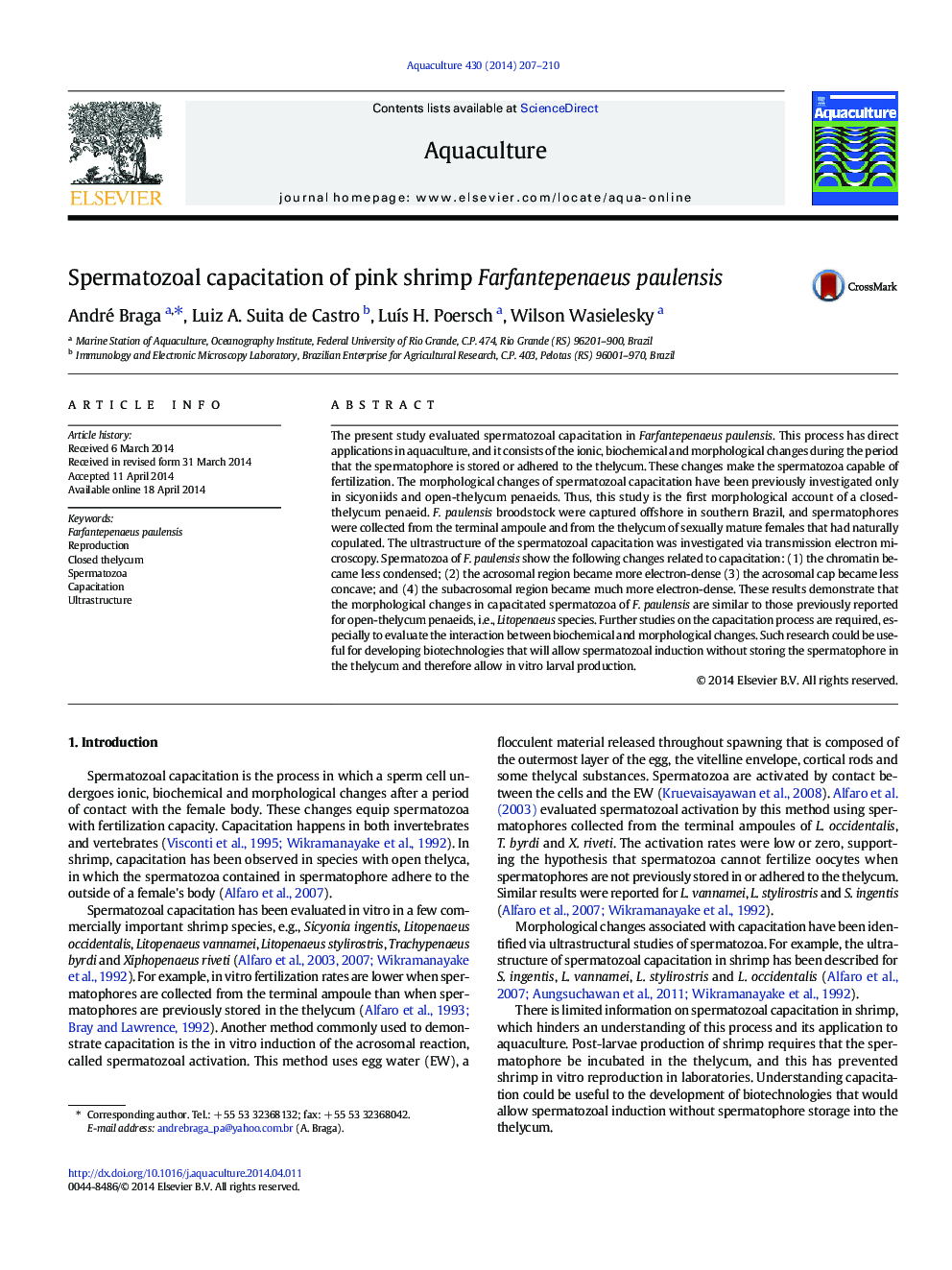| کد مقاله | کد نشریه | سال انتشار | مقاله انگلیسی | نسخه تمام متن |
|---|---|---|---|---|
| 2421846 | 1552857 | 2014 | 4 صفحه PDF | دانلود رایگان |

• After spermatozoal capacitation, the chromatin became less condensed.
• The acrosomal region became more electron-dense in T-spermatozoa.
• The acrosomal cap became less concave.
• The subacrosomal region lost its flocculent appearance and became more electron-dense.
The present study evaluated spermatozoal capacitation in Farfantepenaeus paulensis. This process has direct applications in aquaculture, and it consists of the ionic, biochemical and morphological changes during the period that the spermatophore is stored or adhered to the thelycum. These changes make the spermatozoa capable of fertilization. The morphological changes of spermatozoal capacitation have been previously investigated only in sicyoniids and open-thelycum penaeids. Thus, this study is the first morphological account of a closed-thelycum penaeid. F. paulensis broodstock were captured offshore in southern Brazil, and spermatophores were collected from the terminal ampoule and from the thelycum of sexually mature females that had naturally copulated. The ultrastructure of the spermatozoal capacitation was investigated via transmission electron microscopy. Spermatozoa of F. paulensis show the following changes related to capacitation: (1) the chromatin became less condensed; (2) the acrosomal region became more electron-dense (3) the acrosomal cap became less concave; and (4) the subacrosomal region became much more electron-dense. These results demonstrate that the morphological changes in capacitated spermatozoa of F. paulensis are similar to those previously reported for open-thelycum penaeids, i.e., Litopenaeus species. Further studies on the capacitation process are required, especially to evaluate the interaction between biochemical and morphological changes. Such research could be useful for developing biotechnologies that will allow spermatozoal induction without storing the spermatophore in the thelycum and therefore allow in vitro larval production.
Journal: Aquaculture - Volume 430, 20 June 2014, Pages 207–210